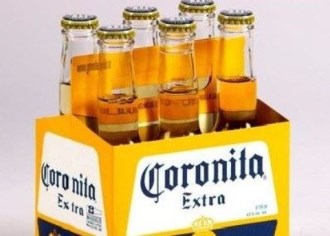

Latin America: The Top Events Past Decade
Latinvex singles out the key events in Latin America business the past decade.
BY LATINVEX STAFF
It has been a notably mixed decade for Latin America. Last year the region saw its strongest performance in ten years in terms of mergers and acquisitions and initial public offers.
But Latin America has also suffered declines in GDP growth and foreign direct investment and increases in inflation.
Meanwhile, the COVID pandemic proved particularly challenging for Latin America and the region also suffered a clear decline in democracy compared to before.
STRONG M&A RECOVERY
Mergers and acquisitions in Latin America saw a strong comeback last year after declining 48 percent in 2020.
Announced deal value grew 114 percent to $147.5 billion last year, with Brazil accounting for $101.1 billion (up 150 percent), according to Refinitiv.
The total Latin American value in 2021 was the best since 2012’s $151.6 billion, according to a Latinvex analysis of yearly data from Refinitiv during the 2012-21 period.
The top deals during the past decade include the $21 billion merger between Vale and Valepar, ABInbev’s $20.1 billion purchase of Grupo Modelo and Suzano’s $14.4 billion acquisition of Fibra. (See full ranking of top 25 M&As 2012-21).
IPO BOOM
Latin America saw a boom in initial public offers during the past ten years, especially the past five years.
All in all, there were 223 IPOs during the 2013-2021 period, raising a combined $80 billion, according to Latinvex research.
Most of the offers took place since 2017, raising $57 billion from 175 IPOs.
Brazil dominated the top five offers during the past decade, but there were also important IPOs from Mexico, Colombia, Chile Argentina and Uruguay.
MACRO ECONOMY, FDI, TRADE
Average GDP growth during the 2012-21 period was only 0.9 percent, compared with global growth of 3 percent, according to a Latinvex analysis of data from the International Monetary Fund (IMF).
Meanwhile, inflation averaged 6.2 percent compared with global rate of 3.5 percent.
Latin America was able to recover faster than the world average from the COVID pandemic in 2020, but its decline that year was also worse than the global medium.
The numbers for this year are less than encouraging. The IMF estimates GDP growth of 2.5 percent (compared with 3.6 percent worldwide), while inflation should reach 11.2 percent, which will be a 25-year high, according to a Latinvex analysis. It also is much higher than the estimated world rate of 7.4 percent.
During the past decade, foreign direct investment declined, going from $188.7 billion in 2012 to $134.5 billion last year.
Both exports and imports grew slightly from $1.1 trillion in 2012 to $1.2 trillion last year, according to data from The World Bank and the UN.
COVID PANDEMIC
The COVID-19 pandemic hit Latin America hard. Not only did the region become a world hotspot for infections (along with the United States), but the measures taken by local governments to stop the spread in many cases caused a dramatic hit to many companies and jobs.
In Colombia and Argentina, lockdowns lasted nearly six months, causing many companies to close outright. Both countries’ airline sectors will take years to recover.
Meanwhile, in Mexico, the government took a laissez faire attitude and did practically nothing – neither necessary measures to stop the infection from spreading nor providing necessary stimulus to companies for their survival.
The initial months of the pandemic saw nearly all sectors hurt, including retail, restaurants, local and international transport and hospitality and tourism. Remittances from the US and Europe were also down the first few months.
As a result, Latin America and the Caribbean suffered a 6.954 percent GDP decline — the worst result since the IMF started projections – 40 years ago – and twice the world decline of 3.1 percent.
FDI plunged to $86.2 billion from $158.7 billion in 2019, according to UNCTAD.
Exports fell 9.4% to $959 billion, while imports declined 15.4% to $895 billion, according to ECLAC.
ODEBRECHT SCANDAL
While Latin America has long been a hotbed for corruption, the Odebrecht scandal stood out for its cross-border system of bribes implicating prominent politicians. The United States Justice Department described it as the “largest foreign bribery case in history.”
The Brazilian construction and engineering giant Odebrecht paid bribes to secure contracts in Argentina, Brazil, Colombia, Ecuador, the Dominican Republic, Panama, Peru and Venezuela.
In Peru alone, four presidents that governed the country since 2001 were implicated: Alejandro Toledo, Alan Garcia, Ollanta Humala and Pedro Pablo Kuczynski.
In Ecuador, former vice president Jorge Glas has been imprisoned since 2017 on corruption charges linked to Odebrecht. And in May, former Panama president Ricardo Martinelli’s sons Luis Enrique and Ricardo Alberto were each sentenced to 36 months’ imprisonment and a $250,000 fine for their roles in a massive bribery and money laundering scheme involving Odebrecht, the US Departmentof Justice announced.
And in Brazil itself, former president Luiz Inacio Lula da Silva was also charged for Odebrecht-linked corruption, although the Supreme Court later freed him on a technicality (ruling that the judge who had convicted him didn’t have jurisdiction). Lula leads all polls ahead of the October presidential elections in Brazil.
The revelations of the Odebrecht bribes, which came as a result of a Brazilian money laundering probe known as Car Wash, impacted major projects by the Brazilian company and even its local business partners.
In Peru, work on a $5 billion natural gas pipeline project — Peru’s largest infrastructure project ever – was stopped. After the scandal broke, Odebrecht planned to sell its stake in the project, but was unsuccessful. The Peruvian government then cancelled Odebrecht’s contract after it missed a key financing deadline. Odebrecht’s partner Grana y Montero has also suffered, with board resignations and share declines. The well-respected company denied any wrongdoing but in the end had to rename to Aenza.
Ironically, Odebrecht was well-regarded before the scandal hit and known for delivering quality work. However, the corruption scheme – the brainchild of Marcelo Odebrecht – led to the firm typically overcharging for work in order to cover the bribes.
Odebrecht even set up a “bribe department” in the Dominican republic to oversee its corrupt payments, according to the International Consortium of Investigative Journalists (ICIJ).
DEMOCRACY WEAKENED
In 2012, Latin America had 12 free countries, 10 partly free countries and one not free country, according to Freedom House. Last year, the region had 11 free countries, 8 partly free countries and three not free countries.
However, two of the countries Freedom House classifies as free – Brazil and Mexico – have seen a deterioration in democracy under their current presidents Jair Bolsonaro and Andres Manuel Lopez Obrador, who both have attacked the country’s judiciary, independent media and election authorities.
Meanwhile, Nicaragua has become a full-fledged dictatorship (with all prominent opposition politicians and journalists jailed) while El Salvador is on its way.
© Copyright Latinvex
Latin America: The Top Events Past Decade
Brazil: The Top Events Past Decade
Mexico: The Top Events Past Decade












